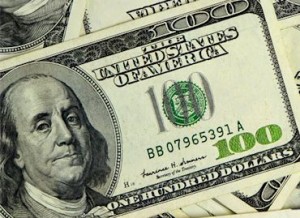How To Get A House Loan
If you come from ‘House Loan 101 – Part 1‘, that contains the basics about a house loan: Great! You’re comfortable with the basics about a house loan, let’s dive deeper into how monthly payments are calculated and the nuances of interest rates, focusing on making these complex financial principles accessible. (If you have not read House Loan 101 – Part , I suggest you start there and then read on here.
Here are the links to this 5 part house loan explainer:
House Loan 101 – Part 1
House Loan 101 – Part 2 (this one here)
House Loan 101 – Part 3
House Loan 101 – Part 4
House Loan 101 – Part 5
Calculating Monthly Payments for a House Loan
The monthly mortgage payment is primarily determined by four factors: the loan amount, the interest rate, the term of the loan, and the type of loan (such as fixed or adjustable). The formula to calculate monthly payments for a fixed-rate mortgage is based on the concept of present value and involves amortization, the process by which the loan balance decreases over the loan term.
Amortization Explained with an Analogy
Think of amortization like cutting a log (the loan) into equal segments (monthly payments) over time. Each chop (payment) has two components: one part cuts into the wood (principal), reducing the size of the log, and the other part is the energy or effort (interest) needed to make the chop. Early on, more energy (interest) is needed, but as the log gets smaller, less energy (interest) and more actual chopping (principal repayment) occurs.
Monthly Payment Calculation
To calculate the monthly payment, banks use an equation that accounts for the compounding nature of interest, ensuring that each payment covers the interest for the period while also reducing the principal owed. This calculation ensures that by the end of the term, the loan is fully repaid.
Fixed vs. Adjustable Rates for a House Loan
– Fixed-Rate Mortgages: The interest rate remains the same for the entire loan term. This means monthly payments are also fixed. Using our analogy, it’s like knowing exactly how much effort each chop will take, no matter how long you’re chopping.
– Adjustable-Rate Mortgages (ARMs): The interest rate can change over time based on market conditions. Initially, ARMs often offer a lower rate (making the initial chops easier), but the effort required can increase or decrease over time. This can affect the size of your monthly payment, making budgeting a bit more like weather forecasting.
Understanding Interest Rates
Interest rates are determined by a combination of factors including the Federal Reserve’s policies, inflation, and the lender’s assessment of risk. Lower risk borrowers (high credit scores, stable income) generally receive lower rates.
Risk-Based Pricing Analogy
Imagine you’re lending out bicycles. Lending to someone with a history of taking good care of bikes and returning them on time is less risky, so you might do it for a small favor in return. But lending to someone with a history of returning bikes late or damaged is riskier, so you might ask for a bigger favor to compensate for that risk. Similarly, banks adjust interest rates based on how risky they perceive the loan to be.
Practical Implications for You
Understanding these principles can help you:
– Shop for the best mortgage rates: Knowing how rates are set can help you improve your credit score and lower your DTI ratio to qualify for better rates.
– Choose the right loan term: Shorter terms mean higher monthly payments but less interest paid over the life of the loan. Longer terms lower monthly payments but increase total interest paid.
– Decide between fixed and adjustable-rate mortgages: Consider your future income stability, how long you plan to stay in the home, and your tolerance for the risk of rising payments.
Checking Your Understanding
To ensure you’ve got a solid grasp of these concepts:
– Can you explain how making a larger down payment affects your loan and interest payments?
– How does the concept of amortization impact the proportion of interest to principal in your monthly payments over time?
– What are the benefits and risks of choosing an adjustable-rate mortgage over a fixed-rate mortgage?
All clear? OK, then let’s move on to House Loan 101 – Part 3.

